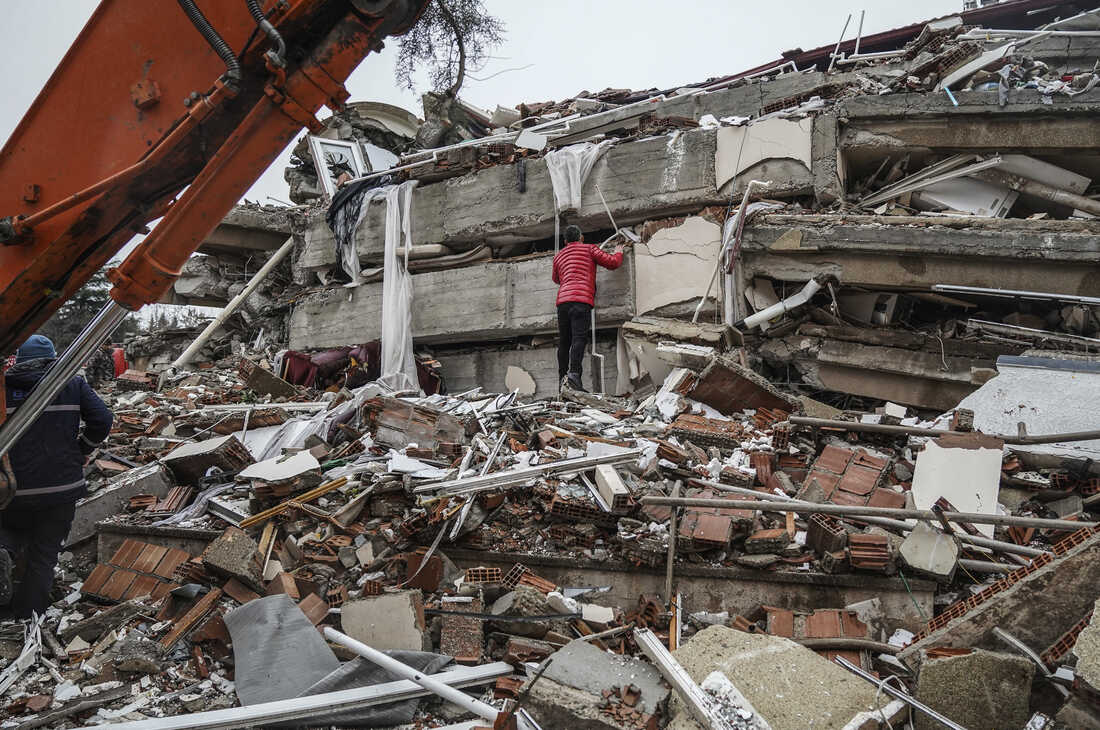The earthquake in Turkey and Syria has resulted in over 40,000 casualties. Photo courtesy of NPR.
RYANN BAHNLINE | STAFF REPORTER | rbahnline@butler.edu
After a 7.8 magnitude earthquake hit southern Turkey and northern Syria, students and faculty are grappling with the aftermath that affected regions close to home. The earthquake has a current death toll of over 41,000, with over 35,000 deaths in Turkey and almost 6,000 deaths in Syria. The initial earthquake was followed by a 7.5 magnitude aftershock, as well as hundreds of smaller aftershocks. The earthquake’s epicenter was near the Turkish city of Gaziantep, leaving much of the city in ruins.
History professor Dr. Tom Paradis, who teaches a range of courses related to urban, cultural, historical and regional geography, broke down the geological causes for the earthquake.
“Various continental and oceanic plates shift around; they’re not stable on the planet,” Paradis said. “This very part of the world [has an] intersection of three different tectonic plates. They’re all coming together at this location … the plate that Turkey is on is slowly shifting to the west, and the Arabian plate is shifting to the north.”
This movement is causing a strike-slip fault, the same kind of fault as the San Andreas Fault. Paradis said that this region has two strike-slip faults that run through it, and several cities and towns have been unwittingly built upon or right next to these fault lines.
Although geologists cannot predict the exact timing for an earthquake of this magnitude, they can predict when something like it is due. There had not been a major earthquake to the extent of the recent 7.8 earthquake in 80 years. Over time, pressure builds up as the plates try to shift past one another, and eventually the tension must break, which leads to the earthquake.
Sophomore biochemistry major Joseph Alsatie has family both south and north of where the earthquake actually happened and was shocked by the number of casualties in the aftermath of the earthquake.
“My parents were talking about it and trying to make sure that nothing is going to happen to our family,” Alsatie said. “With each passing day, the number of casualties increased … it was pretty shocking.”
Alsatie said that aside from the casualties, the structural damage from the tragedy will have profound effects on these communities.
According to the United Nations, the earthquake affected 10.9 million people and as many as 5.3 million may have lost their homes.
“I think there are a lot of people that are just kind of walking around and roaming the streets,” Alsatie said. “There’s no way for them to stay and sleep [in their homes].”
Paradis said while urban populations are in a somewhat better state, small cities and towns are not as lucky.
“[The Turkish and Syrian] governments have not [enforced] building codes,” Paradis said. “We do here in the United States or other parts of Europe or Japan and Singapore … that have the wealth, and they also have the history and the kind of the stable governments to say, ‘We’re going to develop money to it [building codes]; we’re going to devote energy and academics.’”
Paradis said that when the earthquake struck, a significant portion of deaths happened fairly instantly. Concrete buildings are often not reinforced with steel and are self-load-bearing buildings. The violent nature of the earthquake caused the concrete to break down and collapse in on itself.
Despite several cities being reduced to rubble, there is still hope.
“Crews are coming in from all over the world,” Paradis said. “Even those that politically don’t agree [with] or support Syria, for instance.”
Sophomore biology major Ali Mohamed said that it is “really beautiful” to see everyone coming together to support the affected communities.
“I think it’s important to realize that at some point awareness isn’t enough,” Mohamed said. “It’s really great to see all the pictures and videos of the aid that’s gone to the area.”
The Syrian American Medical Society Foundation is a global relief organization that is helping out in crisis relief. Donations to the relief fund can be made on their website.



